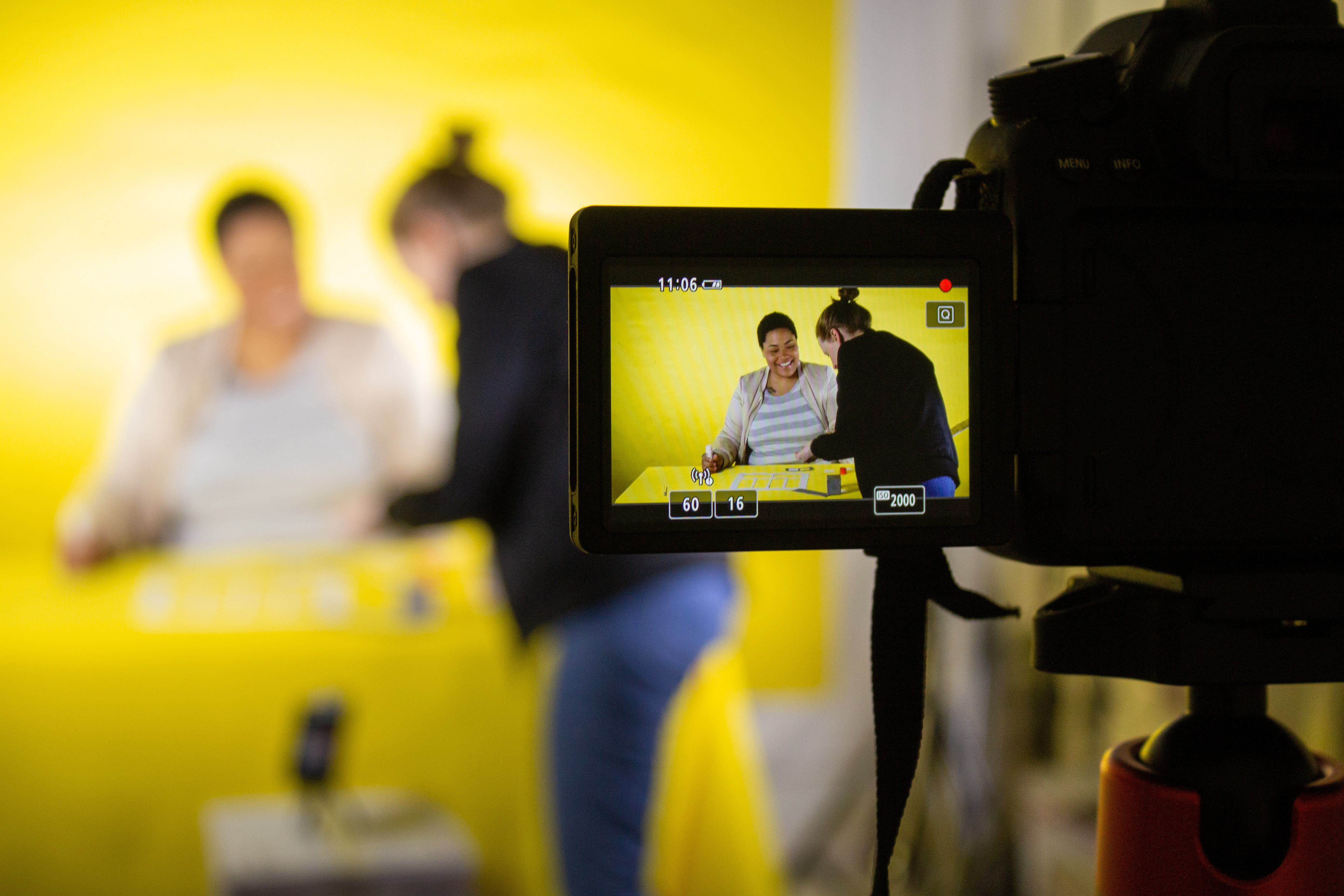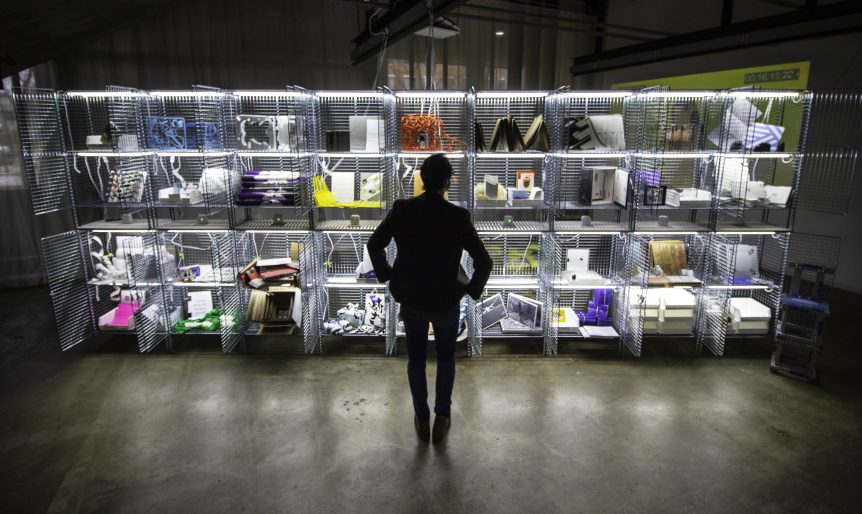
The Fulfilled Exhibition on Feb. 10 kicked off its two-week run ahead of a symposium that will consider the role of architecture in a culture shaped by the excessive manufacture and assuagement of desire.
The Fulfilled Symposium is slated for Feb. 21 through 22 in the Gui Auditorium, KN 250, at Knowlton Hall at The Ohio State University. The exhibition is running now through Feb. 27 at the Banvard Gallery, Knowlton Hall.
Both events are free and open to the public. Fulfilled is supported by the Knowlton School of Architecture, the Institute for Materials Research, Ohio State’s Global Arts + Humanities Discovery Theme, and IKEA.
Fulfillment is a social, typological, formal, aesthetic, and economic practice constructed collectively through both digital and physical interactions, explains event organizer Ashley Bigham, an assistant professor of architecture at the Knowlton School. Fulfillment is a cultural practice which evolves like a language, both universally transferable and contextually specific. This symposium aims to draw out these new arrangements, sticky relationships and material byproducts of cultural production in the age of fulfillment; and to ask once again the age-old question, “What does it mean to be fulfilled?”
The symposium and exhibition examine architecture through three main themes of fulfillment: material, logistical, and cultural. Material fulfillment will explore the use of materials as elements of global capital, finite resources and aesthetic artifacts. Logistical fulfillment will present designs informed by global logistical networks and distribution environments. Cultural fulfillment will examine the architecture of desire through the proliferation of desirable objects from spoons to cities.

Exhibition visitors will see a variety of contents related to the theme of fulfillment ranging from material samples and architectural models to drawings and remnants from failed experiments. The contents were sent from architectural experts and designers around the world, each adhering to the size of a USPS flat-rate box. The exhibition also includes a video installation staring students from the Department of Theatre, in the style of YouTube “unboxing” videos.
“This exhibition focuses on the logistics of its own production as much as it does the content which is being displayed,” Bigham said. “Many contributors took the cardboard box very seriously as a design problem, considering how many of our daily objects were once stored in one. Others simply used the cardboard box as an expedient form of global shipment. The variety of different responses to the prompt is one of the most intriguing aspects of the show.”
The Feb. 21 event will start with a keynote lecture by Keith Krumwiede, an award-winning educator and dean of architecture at California College of the Arts. His research explores the relationship between architecture and the cultural, social and political aspects of the settings in which that architecture exists.
Krumwiede’s talk will be followed by an exhibition reception at Banvard Gallery, Knowlton Hall, at 7 p.m.
The symposium will continue Feb. 22 at 10 a.m. with an introduction by Bigham. Throughout the day, more than two dozen speakers from across the U.S. will allow different perspectives on the material and environmental shortcomings of global logistics to the cultural potentials of a culture of excess.
Story by Mike Huson, IMR Public Relations and Frontier Center Communications
Contact: huson.4@osu.edu
Follow: @OhioStateIMR | @IITB_OSU_FC

 Exhibition visitors will see a variety of contents related to the theme of fulfillment ranging from material samples and architectural models to drawings and remnants from failed experiments. The contents were sent from architectural experts and designers around the world, each adhering to the size of a USPS flat-rate box. The exhibition also includes a video installation staring students from the Department of Theatre, in the style of YouTube “unboxing” videos.
Exhibition visitors will see a variety of contents related to the theme of fulfillment ranging from material samples and architectural models to drawings and remnants from failed experiments. The contents were sent from architectural experts and designers around the world, each adhering to the size of a USPS flat-rate box. The exhibition also includes a video installation staring students from the Department of Theatre, in the style of YouTube “unboxing” videos.
